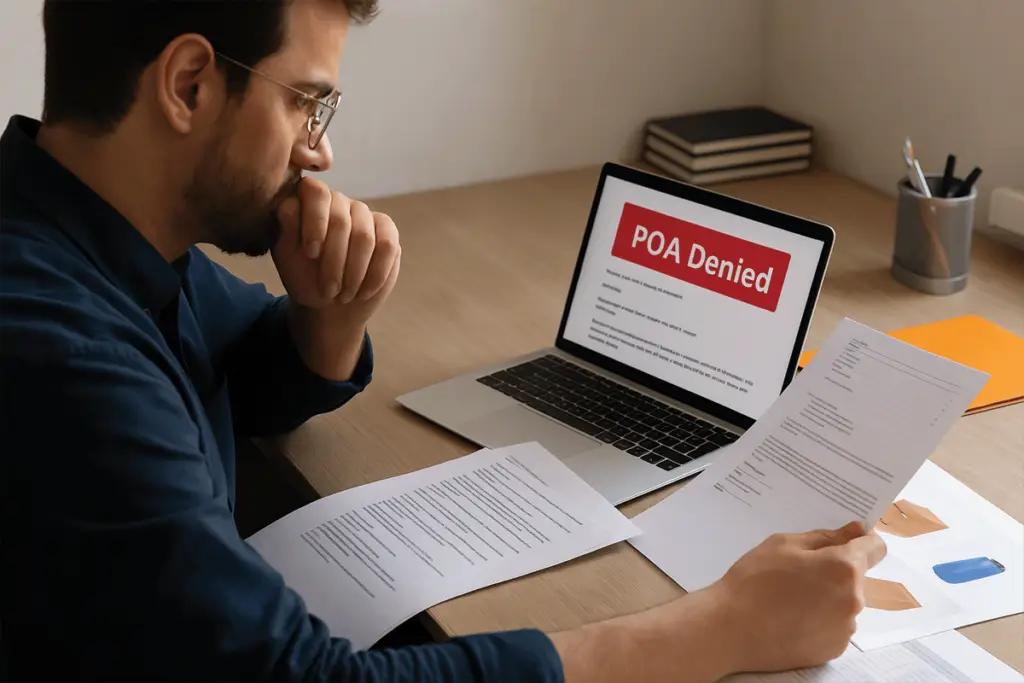Why Amazon Rejects POAs in 2025 — and How to Fix It

Introduction
Submitting a Plan of Action (POA) after an Amazon suspension is only step one. The real challenge? Making sure it gets accepted. In 2025, Amazon has become far more selective about the appeals it approves. If your POA is denied, chances are it failed to meet key expectations.
In this post, we’ll walk through why Amazon rejects POAs in 2025, and how you can avoid common mistakes that cost sellers time, money, and account health.
1. The POA Is Too Generic
Amazon reviewers scan hundreds of appeals a day. If your Plan of Action sounds like a template or lacks details specific to your account, it’s likely to be rejected.
Example of a generic root cause:
“We understand we made a mistake and are taking steps to improve.”
How to fix it:
Be account-specific. Reference the exact ASIN, the nature of the violation, and what part of your operations caused it.
2. The Root Cause Isn’t Clear or Accurate
One of the most common rejection reasons is that Amazon doesn’t believe you truly understand what went wrong.
What not to do:
“There was no issue. The customer was wrong.”
“We believe it was an error on Amazon’s part.”
Instead:
Take ownership. Even if you disagree, identify what Amazon believes was the issue and explain your role in it.
3. No Preventive Measures Provided
You may have fixed the immediate problem, but Amazon cares more about how you’ll prevent it from happening again.
Common mistake:
Only describing the refund you gave or the ASIN you removed.
Better approach:
“We added a 2-step product inspection process. Every shipment is now reviewed using a quality checklist before being sent to FBA.”
4. Weak or Missing Documentation
Amazon often rejects POAs due to incomplete or unreadable attachments.
Examples of bad documentation:
Invoices that don’t show supplier contact info
Screenshots with poor resolution
Documents with mismatched ASINs
How to fix it:
Submit clear, high-resolution PDFs. Invoices should include supplier name, address, phone number, and date of purchase. Highlight SKUs or product identifiers to match the listing.
5. Submitting Multiple Appeals Too Soon
Submitting a second or third appeal before hearing back on the first one often resets the case or leads to faster rejection.
Better approach:
Wait at least 5 business days before submitting a revised appeal. Use that time to reassess your strategy or gather better documentation.
6. Blaming Amazon or the Buyer
Tone matters. If your POA sounds defensive, aggressive, or accusatory, reviewers may reject it regardless of content quality.
Avoid:
“This was not our fault. Amazon made a mistake.”
“The buyer clearly lied.”
Use instead:
“After review, we identified potential confusion with our listing images and have updated them to ensure clarity.”
7. No Clear Plan to Prevent Future Issues
Amazon isn’t just looking for a fix — they want systems in place.
Don’t say:
“We’ll do better next time.”
Do say:
“All staff are now required to complete monthly policy training to ensure compliance with Amazon’s guidelines.”
Final Thoughts
Amazon POA rejections in 2025 are often caused by avoidable mistakes: generic content, unclear causes, missing documentation, or poor tone.
To increase your chances of success:
Get specific
Stay professional
Show Amazon your business is stable and compliant
Back up your claims with real action and documentation
If you’ve received multiple rejections or your account is at risk, the team at AmazonSellersLawyer.com can review your appeal and help you draft a Plan of Action that actually works.
For brands facing repeated IP complaints, hijacking, or enforcement challenges, visit BrandEnforcementLaw.com to protect your listings and brand.
